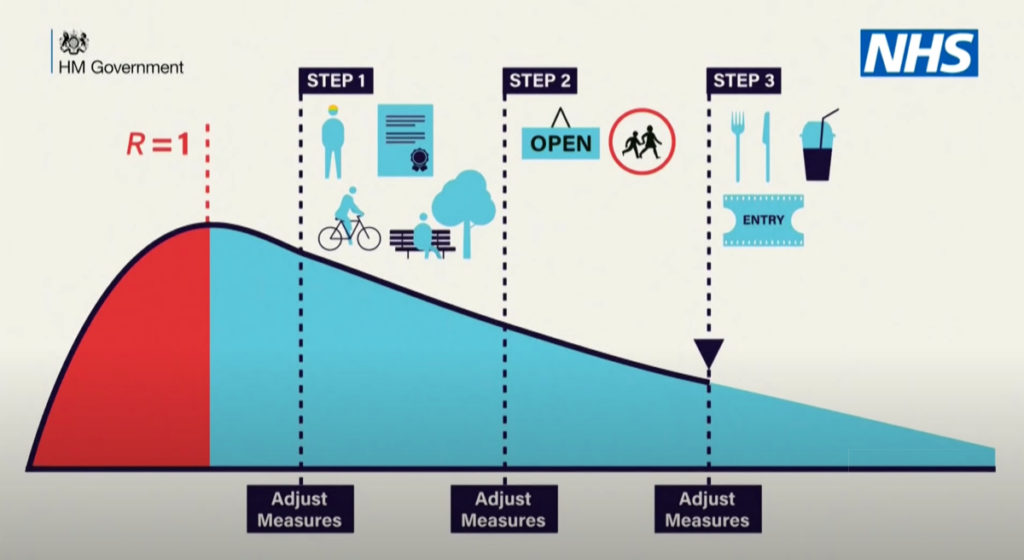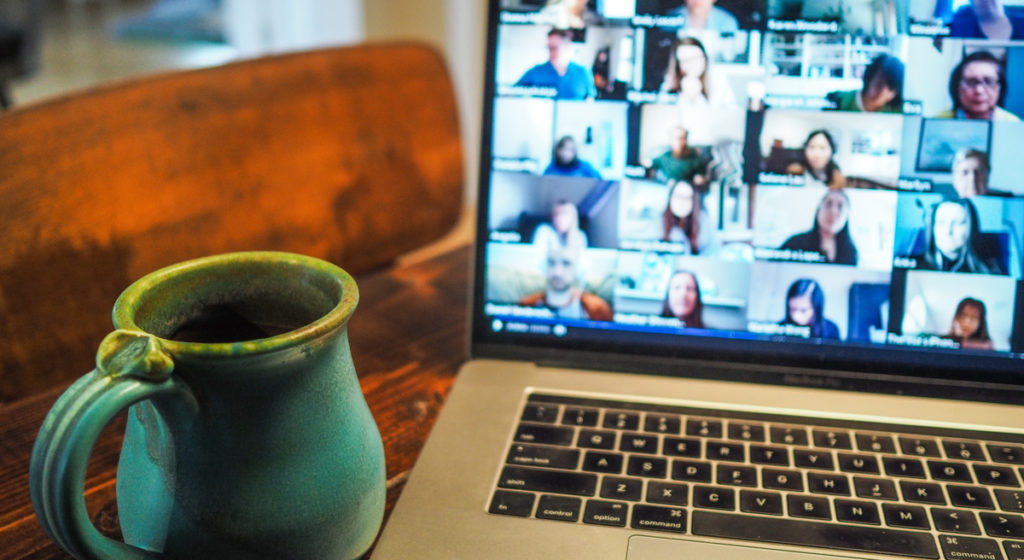This article was written by Julie Lock, Commercial Director of Mitrefinch Ltd. Julie has over 25 years’ experience in the HR, time and attendance and payroll industry and shares her insights into what “returning to work” after lockdown might look like. Want to download a copy of this article to read later? You can download this article here.
Last night, the Prime Minister announced how he plans to tackle the exit strategy from lockdown.
From re-opening workplaces, un-furloughing, embracing remote and flexible working to complying with heightened health and safety rules, this is a complicated time for employers. Whilst some details are still not clear, what we can take from Boris’ lockdown speech is that we’re still very much in the thick of it and the light at the end of the tunnel is still further away than many of us would like it to be.

In this article, with commentary from our Commercial Director, Julie Lock, we will analyse what working practises broke down during the crisis, what employers can do now to help future-proof and streamline their business operations, and our thoughts on what the return to work might look like.
Julie Lock, Commercial Director at Mitrefinch Ltd, explains:
“If you’re not already, now is the time to start preparing for what the future will hold.
In order to be successful, every employer needs a productive and secure workforce. Now is the time to assess what the new world of work will be, how to prepare for the reopening of workplaces, re-onboarding the workforce back into the workplace and to understand what will change mid-to-long-term and what will change forever.
What COVID-19 has taught us about UK business is that, when pushed, most employers, staff and operations are quite flexible (even if once upon a time it felt impossible or impractical). And for many sectors, remote working has been implemented successfully.
Those of us now remote working are asking why we were travelling to the office every day and employers are wondering why they burden themselves with the overheads of premises; large employers with onsite operations are contemplating how they’ll maintain this high-level and detailed workforce management in the long term.
Re-onboarding isn’t just HR’s problem either. There’s the people side, yes, but business leaders will need to consider how their BAU will be affected and what changes they’ll need to make to keep up.”
What ‘broke down’ during the crisis?
Whilst discussions about moving away from the traditional 9-5 working routine have been rumbling on for some time, the crisis has forced the hands of some previously technophobic companies and industries. The vast majority of businesses have had to transition to working from home and many have now embraced the freedoms that this can bring.
There have, however, been some issues with firms struggling to adjust their day-to-day routines in line with the new normal. Some of the problems have been technological, with businesses having to adapt to the use of new software that they’re not yet comfortable with; employees themselves have struggled with issues relating to mental health or productivity.
Julie explains:
“Now is the time to assess what worked well and what didn’t during the remote working process.
How was productivity impacted? Who were the people who stepped up and became essential to the success of the organisation? What tools or processes failed to support the remote workforce? What changed and worked for the better or for the worse? Is going back to the way things were the most beneficial thing to do for productivity and health and wellbeing?”
With that in mind, what are the core areas that we should be looking at?
Productivity
The lockdown period has had a polarizing effect in relation to productivity, with some workers coping well – even exceeding their previous output – and others struggling to cope.
There are several reasons for the uptick in productivity amongst certain workers: without any travel time to get to work and in the absence of workplace distractions, some have found it easier to concentrate throughout the day. Perhaps more importantly, many employees have recognised the severity of the current situation and have pulled together to get work done.
The fact that productivity has also decreased for some of the workforce is also understandable. Not all home environments are the same. In the absence of school and childcare, many parents have needed to juggle the responsibilities of work and home, resulting in a drop in productivity for some. Others may be sharing a workspace with partners – and the recent good weather won’t have helped, either.
The impact on humans
Conversations around mental health, especially in the workplace, are becoming more free-flowing but it’s still an incredibly difficult topic for many staff members to open up about. In 2019, a poll of 2,009 employees and managers in the UK found the 56% of employees had, at some point, struggled with their mental health or wellbeing. A staggering 67% of those admitted that they didn’t tell their employer, with reasons ranging from being too embarrassed (23%), thinking that there was no way their employer could help (24%) or worrying that it would harm their career (19%). And this is all before a global pandemic emerges.

Provisions for mental and emotional wellbeing
With this in mind, employers need to ensure that they, and their management teams, are ready to make provision of the mental and emotional impact that lockdown may have had, or could have, in the future.
There will be unique challenges which have presented themselves during the lockdown. Some of your team may have experienced the death of a family member or friend during this time, a situation made all the harder by social distancing. Others may be classed as vulnerable workers and be experiencing anxiety surrounding returning to work and potentially exposing themselves to the virus.
The shift to remote working practices may have also caused some team members to reevaluate their priorities in life, perhaps looking to find a healthier work-life balance in the long run that allows them to work more flexibly and spend more time with family, or potentially not return to work at all.
Your responsibilities as an employer
It is your responsibility to ensure that you are establishing best-practise mental health support for your entire team and establishing yourselves as a workplace which is supportive, inclusive, and embeds wellbeing into your company policies.
Julie observes that:
“Isolation will impact people differently depending on their situation and experiences throughout the lockdown. Whilst some may be marginally impacted by missing socialising and human interaction, others will have been hit hard, dealing with family illness or even death, being apart from those they need to support, or feeling trapped and helpless. Employers need to be aware that these are heightened times for mental health issues and it is our duty to look out for the signs and are enabled to refer associates to the appropriate supporting services.“
You can do this by designating mental health First Aiders in the workplace. It may also be useful to consider signing up to a scheme such as the Employee Assistance Programme (EAP) to provide help for any employees who are affected by mental health issues. Above all, it will be important for HR and line managers to be vigilant in looking out for any employees who are struggling.
How should we approach the return to work?
Julie notes that:
“Simply opening your doors and inviting your workforce back into the workplace is not enough. Careful planning will need to be in place to ensure that everyone knows how to operate within your social distancing policy, and knows what is expected of them. They will by now have their own routines which augment work and home life, the shock of going back to set shifts will, if not handled carefully, result in a productivity dip.
There will be anxiety around suddenly mixing with other people again, humans need boundaries in order to feel secure, an induction back into the workplace is a perfect opportunity to set these safety rules and deliver reassurance.
Consideration needs to be given to the possibility that some people may not want to or cannot return back to the workplace under old shift rules. The question is, has this lockdown experience given employers the chance to test flexible working, and if so, is this now the time to change?”
Overall, the key will be to take a careful and considered approach when returning to work. The re-onboarding process will need to be planned out strategically, whilst managers will have to handle employees who have become accustomed to the freedom of remote and flexible work.
Given that businesses have encountered technical issues over the past few months, it seems pertinent also to base our return-to-work strategies, at least in part, around tech solutions. Now that companies have invested in remote working software, many have also been questioning whether we need all staff to be in offices all of the time.
What does re-onboarding look like in the COVID landscape?
HR and managers will need to approach re-onboarding strategically and individually for a smooth return. Without flexibility and a sympathetic approach, the businesses could lose some of its best workers just at the time when they are most needed.
Risk assessments
The first step should be to carry out risk assessments so that your business remains compliant with sections 2 and 3 of the Health and Safety at Work Act 1974. If you have 5 or more employees, this means constructing a written report that outlines the possible risks faced by returning employees as a result of returning to work and how these can be mitigated.
Depending on your business context, it may be necessary to introduce PPE into the workplace to prevent the transmission of the virus. With this in mind, the findings of your return-to-work risk assessments should be tailored to the specific sector and environment in which you operate.
In general terms, though, your risk assessments should explore questions such as:
- Can employees safely enter and exit your business premises?
- Is there a risk of third parties such as clients or customers entering the workplace?
- Will meetings have to take place in confined spaces?
- Are facilities such as toilets, kitchens, and breakout spaces safe to be open? Will you need to consider reduced access to these facilities?
- Is there a requirement for First Aiders and fire marshals to be present if the business reopens?
Who should return to work and when?
The final consideration is who should be returning to work and when. Not all of your staff will need to return to work at the same time, and a phased return will help to minimise the risk of COVID-19 spreading. Think about how many staff your business will need to carry out day-to-day operations and consider whether this can be achieved safely.
This will depend on how many people you can safely bring back maintaining the social distancing rules. Some employers will need to consider rotating staff through shift work and working from home, and staggered start and finish times in order to maintain the 2-metre distance rules Consideration must be given to the safe usage of hygiene facilities, rest areas and building entrances and exits.
The gov.uk website offers social distancing and working practise guidelines for employers for a variety of different industries, links to which can be found below:
- Shops running a pick-up or delivery service
- Working in people’s homes as a tradesperson, cleaner or nanny
- Construction
- Manufacturing and processing businesses
- Retail
- Logistics businesses
- Outdoor businesses
- Farming: visiting farms for animal health and welfare
- Fishing or other short-term offshore work
- Cargo-shipping or other long-term offshore work
- Transport businesses
- Waste management businesses
Opening the doors and letting everyone return at the same time will not be an option for most employers, so now is the time to plan the logistics of bringing people back safely.
As you approach the staff re-onboarding process, it will be vital to make sure that those who are most vulnerable to COVID-19 are protected. For some, it may be the case that continued remote working is the only viable option, particularly those whose immune systems are compromised.
The crisis has forced so many firms to implement a remote working policy. In many cases, as we’ve noted, the transition to a more flexible style of working has been successful, opening up the discussion as to why remote working isn’t more widely accepted.

The benefits of remote and flexible working
When we stop and think about it, there are actually plenty of benefits to flexible working policies. Whilst employees are working from home, they are able to achieve a much better work-life balance than they would if they were travelling to work every day – for some commuting employees, the transition to remote working will have freed up a considerable amount of time.
Equally, remote working policies make it much easier for people with disabilities to enjoy a fulfilling career. If flexible working policies were more widely accepted by employees, this would open up a world of new opportunities for many people in society. Remote working also limits the risk of exposure to illness, which will still be the case once COVID-19 is no longer a threat.
Technology and automation
Whether you choose to adopt a phased re-onboarding approach or extend your remote working policy, there are many other ways in which technology and automation can help you achieve your aims.
Time and attendance
The salient issue with remote working is time and attendance. In a conventional office setting, it’s much easier to determine who is in the building and at what times. Conversely, remote working tends to complicate time and attendance.
Despite this, any issues you face with time and attendance whilst remote working can be overcome through the implementation of cloud-based time and attendance software. This type of software enables workers to track their time easily online whilst providing managers with full visibility of tracked hours and sick leave.
Mobile workforce management software can even use employee’s smartphones for geolocation tracking; further assisting with safe working practices. Remote workers who are required to carry out their jobs on the road, for example, carers in the community, can log their location, arrival, and departure information in a central location. Not only does this provide the worker with security knowing that someone knows where they are should anything go awry, but also helps you as an employer keep your workers safe, manage job cost allocation, and reduce time spent chasing or checking where everyone is.
Shift planning
In some sectors, careful planning of employee shifts is required to ensure that all of the work gets done on time. Using our comprehensive workforce management software can help you to achieve this by creating a single view for each of your employees, taking care of time and attendance, payroll, and HR processes all in one place.
What practical measures should be in place when we turn to work?
In addition to technology, there are also many practical measures that need to be considered before your business can return to work. It may be necessary to minimise the contact between employees on-site by introducing specially designed shift patterns. Moreover, health and safety issues relating to social distancing and PPE must also be taken into account.
Staggered shifts and rotation planning
As noted above, it will be impracticable for some firms to bring back their entire workforces at the same time. To ensure that a wider cross-section of employees are able to work, it may be helpful to introduce a system of staggered shifts, with only one rotation of employees present at any one time. The group that comes into work should be kept consistent so that staff members only come into contact with a small percentage of the organisation.
Start time and finish times will also need to be planned out carefully to ensure that there is not a sudden influx of people at any point, which would increase the amount of contact between employees considerably. Similar measures may need to be implemented in relation to break times and lunch hours, preventing too many employees from occupying the same space.
Minimising employee contact and PPE
Further measures to minimise staff contact could include spreading out workstations so that there is a reasonable amount of distance between desks, for example. As has been implemented in some supermarkets across the UK already, it may also be necessary to create a one-way system or access zoning in an office setting so that staff can make their way through the building without coming close to any of their colleagues.
Strict rules will need to be put in place regarding access to communal areas and restrooms, particularly in the case of confined spaces that increase the risk of the virus being transmitted. Whilst it is unclear whether face masks will be mandatory or not at this stage, it may also be advisable to provide staff with free face masks and any other PPE that is relevant to the workplace in question.
Enforcing the rules
Once you’ve created a system of rules to protect employees from the virus, you’ll have to consider how your managers can enforce them. Remember that this has been a particularly uncertain time for us all, so a sympathetic approach will be required. It will take some time for employees to understand and adapt to the new measures that have been put in place so effective communication is needed now, more than ever.
In summary, Julie explains the delicate balance that employers will need to find at this time:
“The last thing the UK workforce needs right now is additional fear; successful social distancing can be achieved in the workplace through strong and continuous communication, this will be far more effective than a list of rules and the threat of punishment. We are asking people to behave differently than what they are used to, therefore people will make mistakes, have plans in place to deal with this swiftly and considerately.
Make the rules visible, invest in marking out the social distancing territories for everyone to clearly see. Use posters as reminders of the rules and support these with messages of keeping the workforce safe. Change the posters regularly to avoid them becoming redundant. Create desktop themes with reminders. Send weekly updates to everyone keeping the topic current. Yes, it does mean that for a period of time the workplace will possibly not look on-brand – but right now, that does not really matter. All that matters is that everyone is safe.”
Do you need help assessing how your business can adapt to these new working practises as lockdown in the UK continues? Talk to a member of our team today for a no-obligation discussion around the challenges your business is facing and how we might be able to help.
Enjoyed this article? Sign up to our newsletter below to receive weekly business updates like this.




